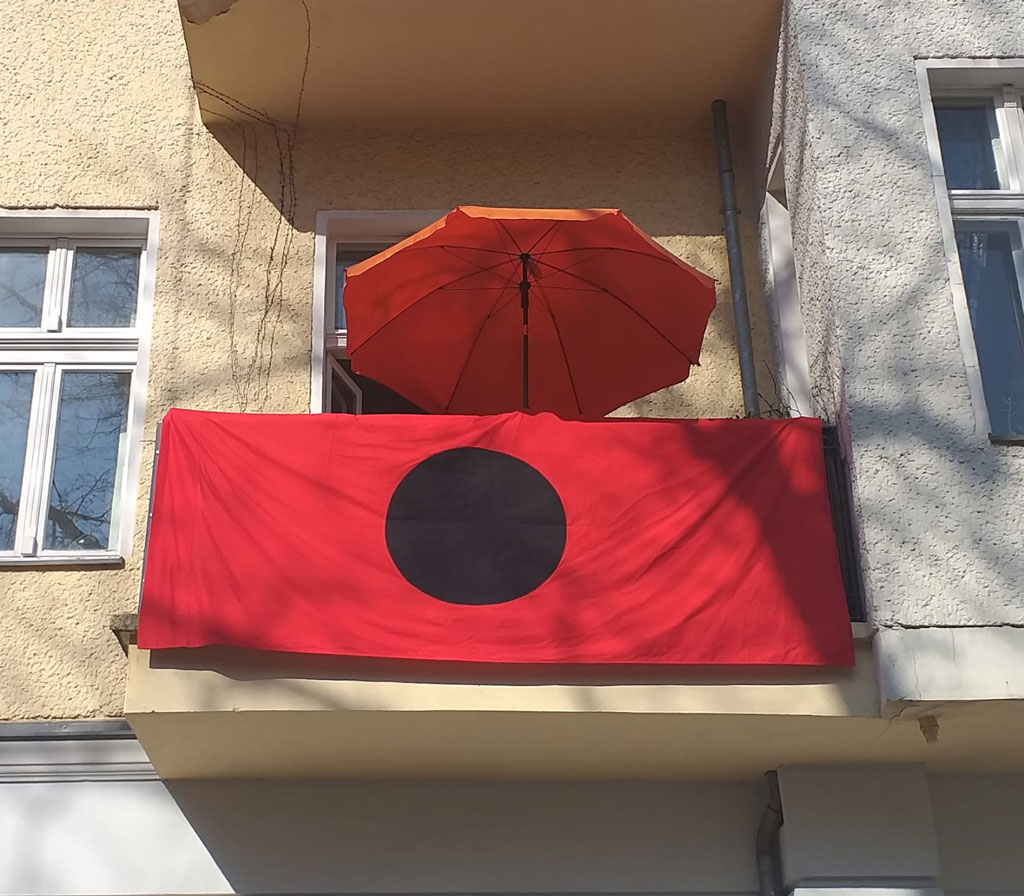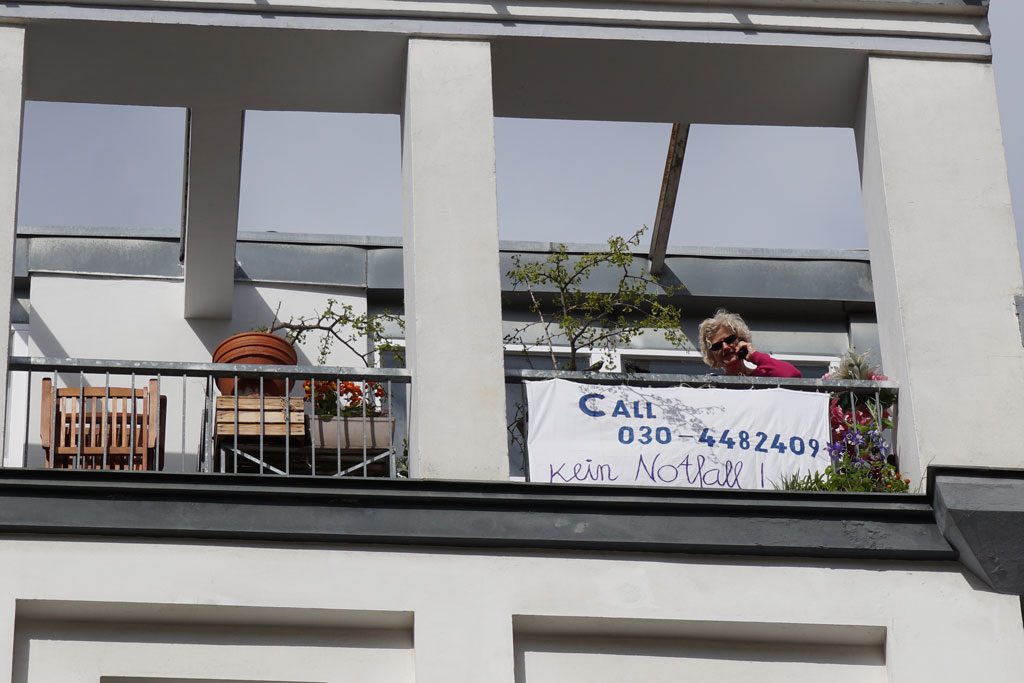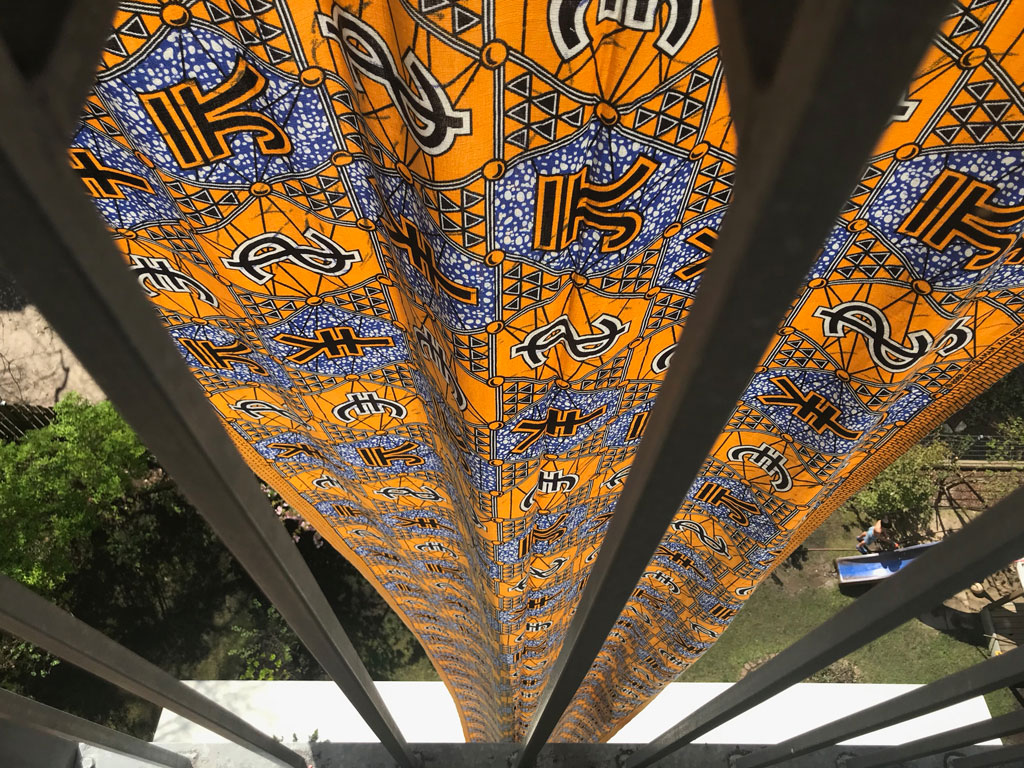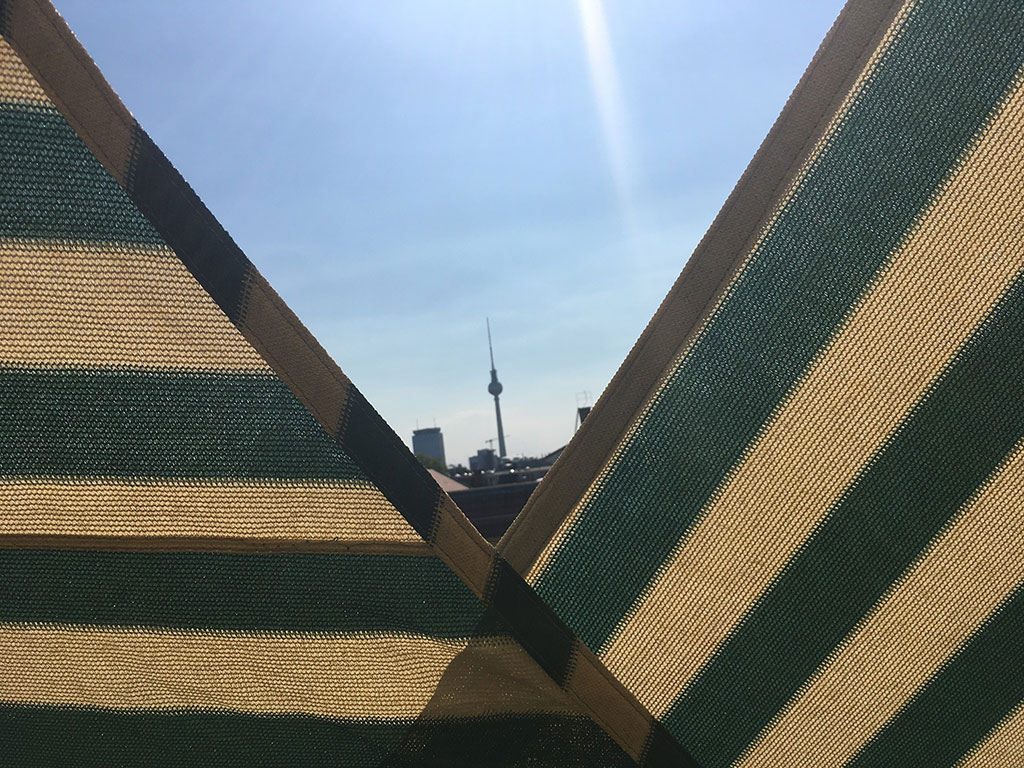ART CITIES:Berlin-Die Balkone
 The COVID-19 pandemic had a sudden and substantial impact on the arts, after the closure of Berlin’s art galleries over the COVID-19 pandemic, around 50 artists exhibited their works on balconies, calling the audience for an “intimate visit” to enjoy their creations.As Övül Ö. Durmusoglu and Joanna Warsza say “While our freedom of mobility is on hold, balconies become unique sites of everyday performance or even civic mobilization. Every architecture school has its own way of designing balconies. Everyone has their own way of inhabiting”.
The COVID-19 pandemic had a sudden and substantial impact on the arts, after the closure of Berlin’s art galleries over the COVID-19 pandemic, around 50 artists exhibited their works on balconies, calling the audience for an “intimate visit” to enjoy their creations.As Övül Ö. Durmusoglu and Joanna Warsza say “While our freedom of mobility is on hold, balconies become unique sites of everyday performance or even civic mobilization. Every architecture school has its own way of designing balconies. Everyone has their own way of inhabiting”.
By Dimitris Lempesis
Photo: Övül Ö. Durmusoglu and Joanna Warsza Archive
Berlin has an important history of artist squats, takeovers, one-night exhibitions. In former East Germany, what was public, in a sense of non-intimidated or uncensored art and life, frequently happened in someone’s kitchen rather than out in the open. Prenzlauer Berg is an old working-class district in the former East Berlin that came through the war relatively unscathed. From the 1960s onward, Prenzlauer Berg was associated with proponents of East Germany’s diverse counterculture including Christian activists, bohemians, state-independent artists, and the gay community. It was an important site for the peaceful revolution that brought down the Berlin Wall in 1989. In the 1990s the borough was also home to a vibrant squatting scene. It has since experienced rapid gentrification. The project, called “Life, art, pandemic and proximity” was organized by curators Övül Durmusoglu and Joanna Warsza and invited members of the artistic community living in Prenzlauer Berg to activate/inhabit their windows and balconies. With zero budget, no opening, and no crowds, the project proposed an intimate stroll to search for signs of life, art, and points of kinship and connection. The work of Christina Dimitriadis is based on the staged and conceptual photography, showing strong autobiographical elements. In most of the pictures the familiar environment and spaces of the artist are dominating. In her installation objects Salwa Aleryani pursues a critical archaeology of the public space, including hints to its fragility and preservation. She focuses especially on the way these physical and socio-cultural areas and their infrastructures mutually depend, shape and change each other. She examines sites, structures and colletive rituals by extracting common objects and materials from their contexts and transferring them into installation arrangements. Sam Durant is a multimedia artist whose works engage social, political, and cultural issues. Often referencing American history, his work explores culture and politics, engaging subjects such as the civil rights movement, southern rock music, and modernism. Theo Eshetu explores perception, culture, and notions of the sacred through electronic time-based media and optical devices and effects. He draws from anthropology, art history, scientific research, and religion to explore clashes and harmonies of human subjectivity between world cultures in the global context. Stine Marie Jacobsen is a conceptual artist working to decode violence and law both individually and collectively through participatory means. Olaf Nicolai has been developing his own unique form of Conceptual Art for the past 20 years. Based on the philosophical influence of his East German education, his work questions the aporias or contradictions of romantic and Marxist aesthetics. Whatever the form or medium adopted, the artist strives to provoke situations that engage a critical dialogue with the context in which they are born. Raul Walch’s installations mark a world of his own viewing and that of his own making. Marta Popivoda is filmmaker and video artist, and a cultural worker. Her work explores concerns with the discursive power structures of the contemporary (art) world, intersections between performance and film, as well as with the Yugoslav socialist project, through the production of films, video installations and performance.
Participating Artists: Salwa Aleryani and Matheus Rocha Pitta, Ulf Aminde, Rosa Barba and Jan St. Werner, Yael Bartana and Saskia Wendland, Elke Buhr and Tobi Müller, Matthias Daenschel, Jeremiah Day and Alisa Margolis, Christina Dimitriadis, Sam Durant and Ana Prvacki, Knut Eckstein, Theo Eshetu, Martin Frese and Eva Scharrer at Tina Löffelbein’s, Olaf Grawert, Jan Peter Hammer, Hannah Hurtzig, Stine Marie Jacobsen, Anne Duk Hee Jordan and Pauline Doutreluingne, Christoph Keller, Jessika Khazrik / Övül Ö. Durmusoglu, Matylda Krzykowski, Xavier le Roy and Scarlet Yu, Lage Egal, Antonia Low and Tommy Støckel, Lina Majdalanie and Rabih Mroué with neighbours, Kamila Metwaly and Max Schneider, Markus Miessen and Lena Mahr, Tom McCarthy and Eva Stenram, Müller Dreimalklingeln and Sonja Lau, Olaf Nicolai, Andrea Pichl, Marta Popivoda and Ana Vujanović, David Rych and kids, Susanne Sachsse and Marc Siegel, Isabella Sedeka, Antje Stahl and Felix-Emeric Tota, Raul Walch, Joanna Warsza and Florian Malzacher, Christina Werner, Dolores Zinny and Juan Maidagan.
Initiated by Övül Ö. Durmusoglu and Joanna Warsza
Cover Photo: Christina Dimitriadis, Die Balkone Life, art, pandemic and proximity, 2020, Archive Övül Ö. Durmusoglu and Joanna Warsza


Right: Sam Durant and Ana Prvacki, Die Balkone Life, art, pandemic and proximity, 2020, Archive Övül Ö. Durmusoglu and Joanna Warsza


Right: Olaf Grawert, Die Balkone Life, art, pandemic and proximity, 2020, Archive Övül Ö. Durmusoglu and Joanna Warsza






Right: Matylda Krzykowski, Die Balkone Life, art, pandemic and proximity, 2020, Archive Övül Ö. Durmusoglu and Joanna Warsza


Right: lageegal_cd, Die Balkone Life, art, pandemic and proximity, 2020, Archive Övül Ö. Durmusoglu and Joanna Warsza

Right: Tommy Stockel, Die Balkone Life, art, pandemic and proximity, 2020, Archive Övül Ö. Durmusoglu and Joanna Warsza







